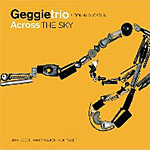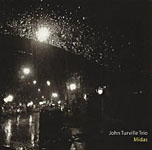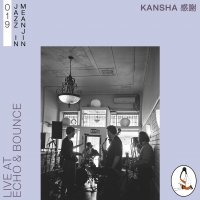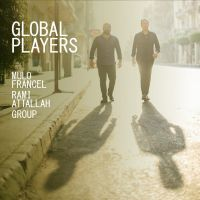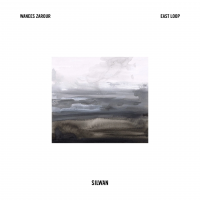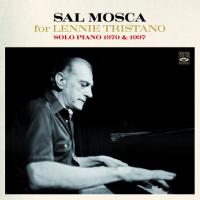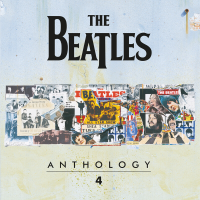Home » Jazz Articles » Extended Analysis » Artie Shaw: Artie Shaw: Classic Bluebird and Victor Sessions
Artie Shaw: Artie Shaw: Classic Bluebird and Victor Sessions
 Artie Shaw
Artie ShawClassic Bluebird and Victor Sessions
Mosaic Records
2009
Shortly after its critically acclaimed box set comprising clarinetist Benny Goodman's essential recordings— The Columbia and Okeh Benny Goodman Orchestra Sessions (2009), which was released to coincide with the centenary of the "King of Swing"—Mosaic Records has done it again. The Classic Artie Shaw Bluebird and Victor Sessions arrives in time for the 100th birthday (May 23, 2010) of the clarinetist who was the instrumental bobby-soxer equivalent of singer Frank Sinatra and arguably jazz's first rock star, a musician capable of attracting Hollywood screen sirens like flies to honey, while behaving more inscrutably than keyboard players Thelonious Monk and Sun Ra put together, and winning the admiration of musicians throughout the world. When Shaw passed away on December 30, 2004, still quick of mind and tongue at the age of almost 94, it might be said about him that his great misfortune was to have outlived his own fame by half a century.
Goodman's Forgotten Rival
For anyone who became aware of jazz in the late 1950s, Benny Goodman's was a familiar name as well as sound, thanks to the late discovery of a recording of the complete Carnegie Hall Concert of 1938, tailor- made for the still relatively-new LP format and widely distributed to members of the Columbia Record Club. Moreover, Goodman was in all the jazz history books—renowned as the King of Swing, the musician who launched the big band era with his outrageously successful Palomar Ballroom stand in August of 1935, the musical crusader who brought to this formerly "lowbrow" music both legitimacy and racial integration. In Downbeat magazine's 75th Anniversary issue (July, 2009), John McDonough traced the publication's own genesis and history to Goodman's success in establishing the sound of jazz in American consciousness. To top it off, Hollywood's The Benny Goodman Story, starring Steve Allen and a host of jazz all-stars, remains on DVD for all generations, present and future, to discover.
As a result, Artie Shaw, who shelved his clarinet and walked away from the music for keeps in 1954, was little more than a shadowy figure by the late 1950s, better known for being a playboy with eight wives and a five-time bandleader with a mercurial temperament than for his clarinet playing, which the next generation of listeners assumed must have been some sort of secondary hobby. It wasn't until much later that younger musicians became increasingly aware—through the stories, usually told by old-timers in the band—of what a peerless player Shaw was, his recording of Hoagy Carmichael's "Stardust" seemingly no less perfect and influential than tenor saxophonist Coleman Hawkins' seminal recording of "Body and Soul."
No Mere Don Juan
For the most part, this Mosaic set, especially when listened to in conjunction with the authoritative accompanying booklet written by the knowledgeable and always insightful John McDonough, makes the case for Shaw as a musician and a clarinetist who, though no clone, was Goodman's equal. Not only was he not a playboy; he was a perfectionist, experimenter, innovator and a workaholic with standards and expectations of himself second to none. His walking away from the music for good in 1954 was not a sign of defeat but an acknowledgment that he had given it all he had, was convinced that he couldn't take the music any further, and most significantly didn't care all that much what his fans or the critics and historians would have to say. Why should he care about history? He managed to outlive most of it.
Lest their be any doubt about Shaw's dedication to his art and seriousness of purpose, a story told by McDonough bears repeating:
Someone had come up to Shaw after a show, relating that he had once played clarinet, then expressing regret that he lacked Shaw's talent. "Talent?" Shaw said. "How long did you play?" "About 10 years," the man said. "About 10 years. Was that around the clock?" Shaw asked. "All 24 hours? Did you live and breathe the clarinet? Did everything in your life come second to the clarinet? Did you learn how not to take a crap if it was going to interrupt your practice? Were you obsessed with the instrument? Did you become familiar with the work of the greatest musicians in the world; do every thing they did for 10 years—and then another 10 years after that? When you do all that, come back and see me. Then we can talk about talent!"
With that anecdote McDonald explodes the stereotype, popular among those more familiar with the name and reputation than the music, that Shaw was a born prodigy and a megalomaniac for whom the clarinet and the music were mere vehicles for serving the needs of a gigantic ego—one requiring the attentions of movie queens, the excitement of change (not merely a harem of Hollywood sirens but five different bands in a career he ended long before half his life was over). And despite his posture of indifference to public opinion, he definitely was concerned about his image—as a romantic, a matinee idol, a Byronic individualist and heroic adventurer, an author capable, on one occasion, of exuding charisma along with the ingratiating bon mot and, on the next, of behaving like a snarling and sniping curmudgeon—yet rarely being anything less than provocative and a good interview.

In the accompanying booklet McDonough skillfully calls attention to the undeniable paradoxes surrounding Shaw. In many respects, the clarinetist was the spitting image of Goodman—virtually the same age, from a poor working-class Jewish family, serving as a sideman in New York studios followed by swing era star status and the Hollywood treatment (but no feature length biopic). In other respects, he was the exact opposite. Goodman was frequently characterized as the somewhat square, absent-minded professor who could still play more precisely and hotter than anyone; Shaw, on the other hand, was the matinee star, dark and mysterious, exotic and romantic—like his tone. Goodman just sought mastery and perfection, then played for the joy of it, preserving much of the spirit of New Orleans and, later, prohibition-era Chicago jazz; Shaw had a flair for the dramatic, and he became a musical Byron or Rudolph Valentino, who intentionally sought to advance the music. Goodman could excite and impress; Shaw could mesmerize and enfold the listener in a developing musical narrative, casting a spell like Coleridge's storytelling Ancient Mariner.
Perhaps the quickest, most efficient way to acquire insight into the different psyches of the two bandleaders is to compare their respective theme songs. Benny Goodman's "Let's Dance" is an invitingly bouncey, riff- driven dance chart; Shaw's signature anthem, very appropriately titled "Nightmare," is funereal and foreboding, its thick textures and minor modalities evoking the off-balance, unstable and shadowy world of film noir. Seen through the lens of his theme song, Shaw exudes the mystique and unconventional, if not neurotic, charisma of a movie star like Humphrey Bogart.
With all of these personal complications in mind, it would be all too easy to dismiss Shaw's clarinet, or rather his use of it, as part of a carefully cultivated image, essential to his transforming the prosaic Arthur Jacob Arshawsky from New Haven, Connecticut into the dashing, one-and-only Artie Shaw—were it not for the undeniable command of his instrument that McDonough alludes to—a mastery so complete that, along with his inimitable tone and technical virtuosity, it's virtually impossible to call him Goodman's, or anyone else's—inferior. McDonough states as much, refusing to pick a favorite but offering a comparison that is as much a study in contrasting styles. To the ears of the present reviewer, in brief Goodman is genial, swinging, capable of playing hot while settling into a comfortable groove and communicating contagious joy, spread among his colleagues and out into the audience; Shaw is a dramatist, a master of devices such as the climactic portamento and the extended upper-register note, drawn to mysterious, or ambivalent, modalities, prone to add strings or a harpsichord just to be different, and finally possessor of a coldly arresting, steely yet full and magnetic, inescapable big tone.
Shaw as Innovator: Separating Fact from Fiction
Yet should a consumer be confronted with having to choose, it would seem irresponsible to urge anyone new to Shaw to take this colossal box set, as impressive as it is, ahead of the Goodman box that immediately preceded it. True, it contains Shaw's four biggest hits ("Frenesi," "Begin the Beguine," "Stardust, " and "Dancing in the Dark"). It also offers a generous sampling of Shaw's various ensembles—the small groups as well as the big bands, along with the clarinetist's ambitious composition, "Concerto for Clarinet," as well as the tune he composed for singer Billie Holiday—"Any Old Time," a melody and a performance that must rank among the highlights of Holiday's career, perfectly suited to her emotional temperament and musical range, as well as her unique elocution and sense of phrasing. In so completely subordinating his own talent to the special needs of his unique and sometimes temperamental vocalist, Shaw no doubt realized one of his finest hours and most noble accomplishments as both an artist and human being.
But on the whole, the experience of listening to the approximately 170 tracks in this collection is to experience music that is frequently formulaic, repetitious and commercial, often more suggestive of the dance bands of the period than of the best jazz as played by organizations led by Duke Ellington, Count Basie, Chick Webb, Jimmie Lunceford and Goodman. Despite his self-assessment as a musical revolutionary, rarely does Shaw play for more than a single chorus—if that. Genuine improvisation, moreover, is held to a minimum. Instead, most of the arrangements consist of passing the melody among different soloists or sections every eight bars, apparently Shaw's version of counteracting the possibility of monotony. Sometimes the device works out beautifully, as on the perfectly sublime "Stardust"; just as often, it's a tiresome, predictable formula, the main interest coming down to the question of when Shaw will make his dramatic entrance and for how long—four bars, or maybe a full 32?
One of Shaw's favorite devices in the first of the orchestras in the present collection, and carrying through to his later aggregations, was to poke fun at what he considered pretentious, even pompous, material recorded by rival bands. His answer to the smooth-voiced crooners of the day was his rough-voiced tenor saxophonist/vocalist Tony Pastor, who is heard on many of the early tracks. With his colloquial timbre and off-the-street elocution somewhere between Louis Armstrong and Louis Prima, Pastor is heard on the Nelson Eddy-Jeanette MacDonald operetta-like duet "Indian Love Call," originally intended as the main feature on the 1938 recording the flip side of which became Shaw's first big hit, a swing version of Cole Porter's "Begin the Beguine," still the clarinetist's best-remembered recording.
It is not until the tenth number in the collection, Cole Porter's "What Is This Thing Called Love," that Shaw complements his trademark, climactic, concluding glissando with an inventive, fully developed jazz solo running for a complete chorus. The performance is no doubt the first distinguished example of a song that would soon become a standard, commanding the attention of trumpeter Dizzy Gillespie and saxophonist Charlie Parker and a seemingly endless string of aspiring beboppers fascinated by the tune's shifting major-minor modalities. By December of 1938 the clarinetist had introduced fresh blood into the band with the addition of tenor saxophonist Georgie Auld, trumpeter Bunny Berrigan, and drummer Buddy Rich. The results are immediately apparent in the prominence of percussion (sometimes the only accompaniment to clarinet) on Ernest Lecuona's "Jungle Drums" and in Shaw's decision to revisit a pop tune from 1924, "It Had to Be You," which the clarinetist takes at an uncharacteristically brisk tempo, again saving a full chorus for himself.
An Early Spark: Buddy Rich
The romantic side of Shaw could frequently give evidence of a Byronic defiance of convention along with a devilish sense of humor, not unlike that of the frequently caustic author of Don Juan. On Rudolph Friml's "Donkey Serenade" both characteristics come into play with the song's frequently balking arrangement, punctuated by the donkey-like vocalizations, or braying, of Shaw's clarinet. At this time, early 1939, the drums of Buddy Rich had elevated the band's ability to swing, with the drummer's crisp hi-hat especially noticeable on the Shaw swing arrangement of Vincent Youman's "Carioca." But many listeners in 2010 are likely to snap to attention when getting to a tune from a March 12, 1939 session during which Shaw recorded an original composition, "Pastel Blue." It doesn't take more than a single listen to recognize the melody as "Blue Monk"—recorded by Shaw years before Monk composed the tune!
 For the listener craving a more extended example of Shaw's clarinet artistry, it finally comes on an original from March 17, 1939, "One Night Stand," with the clarinetist laying down an impressive, characteristically flawless six consecutive choruses, owing in part to the supportive and insistent percussion of Buddy Rich who, on a later recording—"Traffic Jam"—from June 22 of the same year, can be heard recreating a sonic picture of the situation described by the song's title as well as shouting words of encouragement to the other band members. The Shaw-Rich collaboration even appeared with a 19-year-old Lana Turner on the set for a 1939 film, Dancing Co-Ed. Two other highlights from late 1939 are the band's recordings of "Oh, Lady Be Good" and "I Surrender Dear." The former features several Shaw solo spots which, though contained, are well conceived and extremely polished. The second number begins with a building Shaw solo, which is then passed among members of the band, setting up the re-entrance of the clarinet for a final, arresting cadenza.
For the listener craving a more extended example of Shaw's clarinet artistry, it finally comes on an original from March 17, 1939, "One Night Stand," with the clarinetist laying down an impressive, characteristically flawless six consecutive choruses, owing in part to the supportive and insistent percussion of Buddy Rich who, on a later recording—"Traffic Jam"—from June 22 of the same year, can be heard recreating a sonic picture of the situation described by the song's title as well as shouting words of encouragement to the other band members. The Shaw-Rich collaboration even appeared with a 19-year-old Lana Turner on the set for a 1939 film, Dancing Co-Ed. Two other highlights from late 1939 are the band's recordings of "Oh, Lady Be Good" and "I Surrender Dear." The former features several Shaw solo spots which, though contained, are well conceived and extremely polished. The second number begins with a building Shaw solo, which is then passed among members of the band, setting up the re-entrance of the clarinet for a final, arresting cadenza. Rich left the band for trombonist Tommy Dorsey at the end of 1939, but by March 1940 the restless Shaw had not only regrouped but married movie queen Lana Turner in addition to recording what would be the best-selling hit of his entire career, "Frenesi." Perhaps its unexpected success was partially to blame for some curious subsequent detours by the bandleader, including one recording, "Woodland Sketches," which sounds like an innocuous pastoral piece composed, arranged and performed by a third-year piano student (and not a particularly precocious one). But perhaps most puzzling was Shaw's turning to strings as a virtually ubiquitous presence on his recordings from this time forward. Apparently the clarinetist saw the unlikely jazz instrument as a marker—a measure, once again, of his uniqueness, or difference from Goodman, Dorsey, and the competition. No doubt Shaw sensed that strings connoted both class and innovation; practically speaking, however, they merely weighed heavily on his new ventures, serving as little more than background color or sweetening, hampering the band's efforts to swing while homogenizing the sound of the ensemble.
Along with attempting to distinguish his big band, Shaw could not help but take note of the success of Goodman's trio, quartet and sextet. His response was to form his own small group, The Gramercy Five, insisting that his pianist, Johnny Guarnieri, play harpsichord in the group. Even though the experiment produced at least one hit, "Summit Ridge Drive," along with some inventive solos by trumpeter Billy Butterfield and Shaw himself, the present-day listener is apt to wonder if, as with the strings, Shaw hadn't once again shot himself in the foot. Neither individually nor collectively does the Grammercy Five begin to compare with the best recordings by any of Goodman's small groups. And if Shaw thought the harpsichord might prove a distraction from the chemistry achieved by Goodman with pianist Teddy Wilson, vibraphonist Lionel Hampton and drummer Gene Krupa, he was dead right. But it was not a diversion worth seeking.
With the arrival in late 1940 of trombonist Jack Jenney, one of the three superlative soloists on the legendary "Star Dust" recording (with Shaw and Billy Butterfield completing the triumvirate), Shaw seemed to get back on track. Though frequently falling back on his call-response routine with the saxophone section and his patented, crowd-pleasing glissandos, he recorded some compelling, wailing blues choruses with the band as well as his ambitious "Concerto for Clarinet" in December of 1940, followed the next month by "Dancing in the Dark," one of his four most popular recordings, each selling a million or more copies.
Shaw and Race
As though bored by success, the peripatetic Shaw suddenly disbanded only to regroup in the summer of 1941, retaining 12 string players but adding vocalist Lena Horne, whose beauty he confessed was a primary consideration, along with jazz stars Benny Carter, alto, Red Allen, trumpet, and J.C. Higginbotham, trombone. It's tempting to conjecture what Shaw's motives were—whether the main concern was with musical innovation or with image. If the arrangement summons up, in the mind of 2010's reader, dramatic, attention-getting, even sensational polarities such as the sublime and the sordid, the ethereal and the earthy, respectable high culture vs. a musical form that had until recently been stigmatized as inferior and unrespectable, Shaw's own words support such a notion: in a 1980s' interview he claimed his larger purpose was to contrast "primitivism" with "European culture."
Unfortunate word choices, perhaps, but they do lead quite naturally into consideration of Shaw's views on race. Having risen from a poor Jewish background and experienced prejudice first hand, he like Goodman certainly was sympathetic to civil rights issues and willing to put everything on the line where racial equality was concerned. Hence, his hiring of Billie Holiday and numerous other black musicians, often against advice to the contrary. At the same time, it's instructive to compare Shaw's views on race with Goodman's. McDonough makes the point that Goodman was essentially "color-blind." He discovered guys who were great musicans—Wilson, Hampton, guitarist Charlie Christian—and who, moreover, happened to be black. It was their artistry that mattered most, and no racial prohibitions were sufficient to prevent him from featuring such seminal players in his concerts or merely calling attention to their contributions, as with his invitation to both Ellington and Basie and many of their musicians to join him for the landmark 1938 Carnegie Hall concert. By contrast, Shaw tended to see the racial problem as a worthy cause and himself as the courageoust crusader, deliberately taking up the struggle which others might be reluctant or too timid to get involved with. Again, he brings to mind a Romantic hero like Byron, who died fighting for the cause of Greek independence even as he continued to ridicule English society with his acidic pen and widely read mock-heroic epic poems.
Toward the end of 1941 Shaw would add another prominent black musician to his band, trumpeter Hot Lips Page. A happy consequence of such changes in personnel—later it would be trumpet star Roy Eldridge who would get the call—was a much-needed counter-balance to the commercial, frequently saccharine sound and amorphous rhythm of Shaw's ever-present syrupy strings. Page's feature numbers, like "Take Your Shoes Off, Baby" and "St. James Infirmary," come to the modern listener of this collection as welcome relief—a breath of fresh air in an atmosphere made cloying and not a little monotonous by too much straight melody played by too many violins. The modern listener has to wonder if Shaw was aware that on a number like Ray Conniff's "Just Kiddin' Around" the leader and his strings were being upstaged by Page.
At the same time, some of Shaw's efforts surmounted both the charges of commercialism and pretense, managing to avoid the mainstream of big band riff tunes in favor of third-stream, or innovative, material in the form of two compositions—"Evensong" and "Suite #8—both of which were contributed to the book by composer Paul Jordan. As with the later experiments of Gunther Schuller and John Lewis, when the term third-stream officially became part of the jazz lexicon, both of Shaw's offerings were vulnerable to the question, "But where's the jazz?" Again, the "jazz" falls to Page, whose muted and unmuted trumpet ironically hearkens back to the days of Ellington at the Cotton Club, for the question to seem even relevant to the finished result on the present recording, which sounds more atmospheric than progressive.
Shaw Regroups, with No Strings Attached
Following a two-year tour of duty with the navy, Shaw would not regroup until late 1944, but with this difference: no longer any strings attached and far fewer vocals. He was no longer in the business for the sake of scoring the next chart-buster. His eyes were on a higher prize: presumably, a lasting legacy. Assisting him to that end were Roy Eldridge, perhaps the most important trumpet player between Armstrong and Gillespie, the flakey but capable and harmonically advanced pianist Dodo Marmarosa, and finally the Charlie Christian disciple, guitarist Barney Kessel. While these musicians injected the Gramercy Five with a new, forward-looking sound, trombonist-arranger Ray Conniff, who would become somewhat of a recording star in his own right in the 1950s, provided the large ensemble with arrangements with less sentiment and more edge than the pre-war book. Tunes like "Little Jazz" featured a more contained and subdued Eldridge than the hot-playing, reach-for-the-stratosphere trumpeter who had epitomized the spirit of the swing era and would do so again with Jazz at the Philarmonic and the festivals that began to emerge in the 1950s.
It's doubtful that any of the 1945 recordings by this unit were as daring or history-making as Shaw may have wished or perceived them to be. But some still repay careful listening. Eddie Sauter—who would later be responsible for the arrangements on saxophonist Stan Getz's most complex and inaccessible yet beautiful recorded work, Focus ( Verve, 1961)—contributed a stunning arrangement of the by-now overly familiar "Summertime." Yet the Gershwin staple has perhaps never sounded fresher or more intriguing, with equally striking solos by Shaw and Eldridge.
Besides Conniff's and his own arrangements, the band's book was fortified by the contributions of Sinatra arranger George Siravo, yet the present-day listener could be forgiven for expecting something more, especially given Shaw's lofty ambitions and professed disregard for the demands of the marketplace. Of course, there's the occasional surprise, such as Sauter's "The Maid with Flaccid Air," a parody of Debussy's "The Maid with Flaxen Hair" (and somewhat reminiscent of Sinatra's parodic yet serious "There's a Flaw in my Flue"). And there's the occasional bebop-influenced solo work of Marmarosa as well as the Christian- inspired guitar virtuoisty of Kessel, but for the most part the surprises are too few and the predictability all the more conspicuous for the leader's outspoken stand against it.

How to Listen to Shaw
A modern-day listener determined to get through all of the tunes on this recording would be well advised to, rather than trust inspiration, take the approach of a baseball fan who always attends the game with scorecard in hand. First, determine the form of the song, whether a 12-bar blues, a 32-bar standard (with or without bridge) or something else. Be aware that approximately 80% of the tunes will follow the 32-bar form, with the exception of the first tune on the collection, Shaw's best-known performance of all, the exceptionally long (108 bars) "Begin the Beguine." Now play some variation of "follow the bouncing ball," tracing the journey of the melody from chorus to chorus as though it were an unfolding narrative. The final sketch may take a form as basic as the following:
Song: "I Can't Get Started," recorded July 24, 1945. 32-bar song form with bridge, tempo = medium- up swing.
1. 1st chorus: Clarinet takes first 16 bars, passing the melody to muted trumpets for the bridge. The final eight parts (reprise of the opening eight) are assigned to the sax section. 2. Brief interlude with modulation to another key. Saxophones continue, taking the first 16 bars of the melody, answered by Marmarosa piano fills. At the bridge the melody is played in unison by the trombone section, with saxophones providing answering (call-response) fills, then the last 8 parts are given to solo trumpet. 3. Short interlude to build up dynamic scale in preparation for a big, full finale chorus played tutti by the entire orchestra, leading to a climax on a tonic note to which Shaw sets his torch (glissando and top tone).
Expect each song to follow a similar pattern—usually three choruses (no more than two and a half if it's a ballad—with constantly changing "melody carriers," who nevertheless manage a fairly continuous, unbroken flow despite apparent little interruptions, side-tracks and call-response conversations. This way the listener is far more apt to catch some of the variations, such as the instances where Shaw goes AWOL for three- quarters of the tune, or plays the first eight bars, then disappears for the remainder, often returning for the climax, but not always.
Shaw's Place in 20th Century Music History
Unquestionably, those who grew up with Artie Shaw will have a different assessment about his place in American popular musical history and jazz than those who came upon his name and recordings after he had permanently retired from music at the ripe old age of 44, half a century before his last goodbye. And even those who remember Benny Goodman would have considerable difficulty putting the music of Artie Shaw on the same playing field as the latter. Shaw's dramatic, deliberative style and cultivation of his image is practically the antithesis of the esprit de corps one frequently senses during an inspired, though still highly professional and meticulous, Goodman performance. Ultimately, Shaw must be judged second to Goodman, who built on the New Orleans sounds that had traveled to Chicago, where Goodman and the Austin High School gang absorbed the music of cornetist King Oliver, Louis Armstrong, clarinetist Johnny Dodds and soprano saxophonist and clarinetist Sidney Bechet, seeking to find their own place within this elite community, and then to reflect this vital indigenous music as a vibrant and living tradition in their own playing.
By contrast, Artie Shaw seemed to see the past as a foil to his own accomplishments—a showcase useful for exposing to the public his own visionary innovations and advancements. The past was important to him insofar as it enabled him to make a statement about his own modernity—his defiance of accepted but outworn conventions and expected, predictable ways of doing things. The evidence, even from this remarkable Mosaic set, is insufficient to prove that he succeeded in this mission. As serious as he was about the music, his very identity seemed dependent upon a certain notoriety and attention-getting compulsiveness, which may help explain his later turning to psychoanalysis, a preoccupation of his last 50 years. Small wonder that Shaw should be an enigma to the rest of us.
What is undeniable, if not crystal clear, is the brilliance of Shaw as a musician and, above all, as a clarinetist. He didn't for a moment underestimate the challenges and the sacrifices that the music entailed, and while he stayed with the clarinet there perhaps was none better. Those who dare assert, in an authoritative manner, that Shaw was Goodman's inferior as a clarinetist had better be prepared to have their heads handed back to them: anyone who's heard this extraordinary collection is bound to know better. Admittedly the audio is occasionally "lo fi" and bass-deficient, especially on the earliest recordings, yet through the entirety of this collection of some 170 tracks, the sound of the clarinet is pristine, full and unforgettable, a hard, gem-like, phallic flame, burning with life and presence—hitting its mark without fail and remaining indelibly inscribed in the listener's consciousness. If eight problematic marriages taught him anything about the imperfections of human relationships, it was to seek perfection in the places where it could be found.
Tracks: CD1: Begin The Beguine; Indian Love Call; Comin' On; Back Bay Shuffle; Any Old Time; I Can't Believe That You're In Love With Me; Nightmare; Non-Stop Flight; Yesterdays; What Is This Thing Called Love?; Softly As In A Morning Sunrise; Copenhagen; Jungle Drums; It Had To Be You; Lover Come Back To Me; My Heart Stood Still; Rosalie; Vilia; The Man I Love; The Donkey Serenade; Zigeuner; Carioca; I Can't Believe That You're In Love With Me; Yesterdays. CD2: Alone Together; Rose Room; Delightful Delirium; Prosschai; I'm Coming Virginia; Pastel Blue; Snug As A Bug In A Rug; One Night Stand; One Foot In The Groove; Octoroon; When Winter Comes; Out Of Nowhere; I Can't Afford To Dream; Go Fly A Kite; Traffic Jam; Serenade To A Savage; Put That Down In Writing; Oh, Lady Be Good; I Surrender Dear; If What You Say Is True; You're A Lucky Guy; Shadows; Serenade To A Savage; Shadows. CD3: Frenesi; Adios Marquita Linda; A Deserted Farm; April In Paris; King For A Day; Special Delivery Stomp; Summit Ridge Drive; Keepin' Myself For You; Cross Your Heart; Temptation; Chantez les bas (Sing 'Em Low); Star Dust; Marinella; Danza Lucumi; This Is Romance; What Is There To Say?; Pyramid; Blues (Pt.1; Blues (Pt.2); Who's Excited?; Prelude In C Major; Dr. Livingstone, I Presume?; When The Quail Come Back To San Quentin; My Blue Heaven; Smoke Gets In Your Eyes. CD4: Concerto For Clarinet (Pt.1); Concerto For Clarinet (Pt.2); Dancing In The Dark; I Cover The Waterfront; Moonglow; Alone Together; If I Had You; Georgia On My Mind; Why Shouldn't I?; It Had To Be You; Confessin' (That I Love You); Love Me A Little Little; Beyond The Blue Horizon; Don't Take Your Love From Me; Blues In The Night; Nocturne; Rockin' Chair; Through The Years; If I Love Again; Is It Taboo?; I Ask The Stars; Beyond The Blue Horizon; Blues In The Night. CD5Take Your Shoes Off Baby; Solid Sam; Just Kiddin' Around; To A Broadway Rose; St. James Infirmary Blues (Pt.1); St. James Infirmary Blues (Pt.2); Deuces Wild; Evensong (Dusk); Suite #8; Hindustan; Carnival; Needlenose; Two In One Blues; Sometimes I Feel Like A Motherless Child; Solid Sam; Just Kiddin' Around; To A Broadway Rose; St. James Infirmary Blues (Pt.1); St. James Infirmary Blues (Pt.2); Deuces Wild; Carnival. CD6: Lady Day; Jumpin' On The Merry-Go-Round; I'll Never Be The Same; 'S Wonderful; Bedford Drive; The Grabtown Grapple; The Sad Sack; September Song; Little Jazz; But Not For Me; Tea For Two; Summertime; Easy To Love; Time On My Hands; Tabu; A Foggy Day; These Foolish Things; The Man I Love; I Could Write A Book; Thrill Of A Lifetime; Kasbah; Lament; Lucky Number; Kasbah; Lucky Number. CD7: Love Walked In; Soon; Keepin' Myself For You; No One But You; Natch; Our Love Is Here To Stay; I Was Doing All Right; Someone To Watch Over Me; Things Are Looking Up; The Maid With The Flaccid Air; No One But You; They Didn't Believe Me; Dancing On The Ceiling; I Can't Get Started; Just Floatin' Along; Don't Blame Me; I Can't Escape From You; Scuttlebut; The Gentile Grifter; Mysterioso; Hop Skip And Jump; They Can't Take That Away From Me; Mysterioso.
Personnel: Artie Shaw: clarinet; other personnel. View all personnel
Personnel
Artie Shaw
clarinetAlbum information
Title: Artie Shaw: Classic Bluebird and Victor Sessions | Year Released: 2010 | Record Label: Mosaic Records
Tags
PREVIOUS / NEXT
Support All About Jazz
 All About Jazz has been a pillar of jazz since 1995, championing it as an art form and, more importantly, supporting the musicians who make it. Our enduring commitment has made "AAJ" one of the most culturally important websites of its kind, read by hundreds of thousands of fans, musicians and industry figures every month.
All About Jazz has been a pillar of jazz since 1995, championing it as an art form and, more importantly, supporting the musicians who make it. Our enduring commitment has made "AAJ" one of the most culturally important websites of its kind, read by hundreds of thousands of fans, musicians and industry figures every month.



